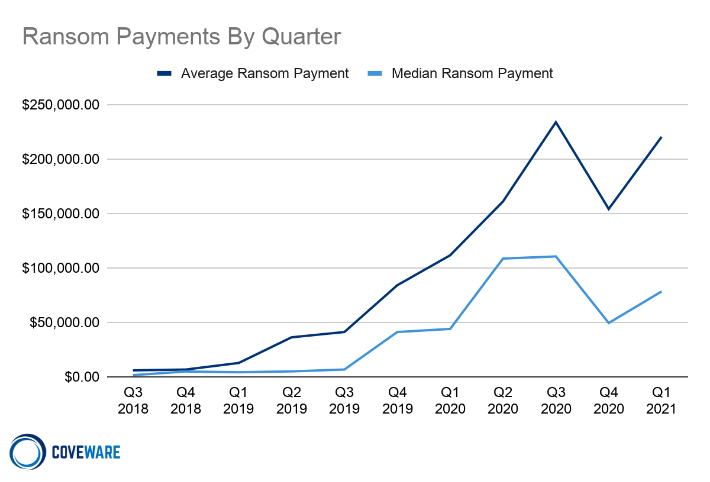Introduction
Ransomware has become one of the most prevalent and damaging cyber threats in recent years. It is a type of malicious software that encrypts a victim’s files and demands a ransom payment in exchange for the decryption key. Over time, ransomware has evolved and adapted to new attack vectors, making it even more dangerous and difficult to combat.
In this blog post, we will explore the evolution of ransomware and delve into the understanding of new attack vectors that cybercriminals are utilizing. By gaining insights into these evolving techniques, individuals and organizations can better protect themselves against ransomware attacks and mitigate the potential damage.
The Early Days of Ransomware
In the early days, ransomware primarily spread through email attachments and infected websites. Victims unknowingly downloaded and executed the malware, which then encrypted their files. These attacks were often indiscriminate, targeting individuals and organizations alike.
1. Email Attachments
Email attachments remain a popular attack vector for ransomware. Cybercriminals send emails with malicious attachments disguised as legitimate files. Once the attachment is opened, the ransomware is executed, and the victim’s files are encrypted.
2. Infected Websites
Infected websites are another common method of ransomware distribution. Cybercriminals compromise legitimate websites and inject malicious code into them. When users visit these websites, the code is executed, and the ransomware is downloaded onto their systems.
The Rise of Exploit Kits
As cybercriminals became more sophisticated, they started using exploit kits to distribute ransomware. Exploit kits are toolkits that target vulnerabilities in software and deliver malware to vulnerable systems.
1. Drive-by Downloads
Exploit kits leverage drive-by downloads to infect systems. When a user visits a compromised website, the exploit kit scans their system for vulnerabilities. If a vulnerability is found, the kit delivers the ransomware payload without the user’s knowledge or consent.
2. Malvertising
Malvertising, or malicious advertising, is another method used by cybercriminals to distribute ransomware. They inject malicious code into legitimate online advertisements, which then redirect users to websites hosting exploit kits. Once again, vulnerabilities are targeted, and the ransomware is delivered.
Summary
Ransomware has undergone significant evolution since its inception, with cybercriminals constantly finding new ways to exploit vulnerabilities and maximize their profits. This blog post aims to shed light on the latest attack vectors employed by ransomware operators, providing readers with a comprehensive understanding of the evolving threat landscape.

By staying informed about the latest ransomware trends and attack techniques, individuals and organizations can implement proactive security measures to safeguard their data and systems. It is crucial to remain vigilant, regularly update software, educate employees about phishing and social engineering tactics, and maintain secure backups to mitigate the impact of a potenti Click This Link al ransomware attack.
- Q: What is ransomware?
- A: Ransomware is a type of malicious software that encrypts files on a victim’s computer or network, rendering them inaccessible until a ransom is paid.
- Q: How does ransomware evolve?
- A: Ransomware evolves by constantly adapting to new attack vectors and techniques, such as exploiting software vulnerabilities, using social engineering tactics, or leveraging advanced encryption algorithms.
- Q: What are some new attack vectors used by ransomware?
- A: Some new attack vectors used by ransomware include phishing emails, malicious attachments, drive-by downloads, exploit kits, remote desktop protocol (RDP) vulnerabilities, and compromised websites.
- Q: How can ransomware infect a computer?
- A: Ransomware can infect a computer through various means, including opening infected email attachments, visiting compromised websites, downloading malicious files, clicking on malicious links, or exploiting software vulnerabilities.
- Q: What can individuals and organizations do to protect against ransomware?
- A: To protect against ransomware, individuals and organizations should regularly update their software and operating systems, use strong and unique passwords, employ reputable antivirus and antimalware solutions, backup important data regularly, exercise caution when opening email attachments or clicking on links, and educate themselves about the latest ransomware threats.
- Q: Should victims pay the ransom?
- A: It is generally not recommended to pay the ransom, as there is no guarantee that the attackers will provide the decryption key or that they won’t target the victim again in the future. Additionally, paying the ransom only encourages and funds further criminal activities.
- Q: Can ransomware be decrypted without paying the ransom?
- A: In some cases, security researchers or law enforcement agencies may develop decryption tools that can help victims recover their files without paying the ransom. However, this is not always possible, and prevention and backup strategies are the best defense against ransomware.



